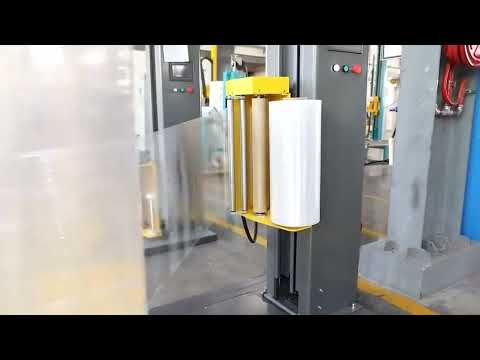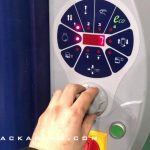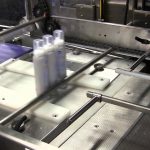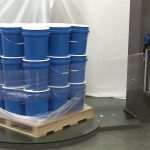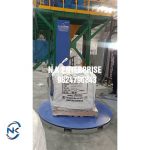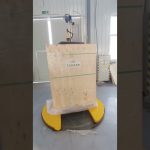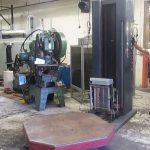Title: “Efficient Automatic Pallet Wrapping Machine for Streamlined Logistics | Economical Series”
Description:
Introduction:
Welcome to our comprehensive video showcasing the Automatic Pallet Wrapping Machine, a highly efficient and cost-effective solution for all your pallet wrapping needs. In this video, we will delve into the features, benefits, and various applications of this state-of-the-art machine, designed to optimize logistics operations.
Video Content:
Our Automatic Pallet Wrapping Machine is specifically engineered to provide a seamless pallet wrapping experience. With its advanced stretch film pallet wrapper technology, this machine ensures secure and tightly wrapped pallets, offering maximum protection during transportation and storage.
Key Features:
– Time and Labor Saving: This machine automates the pallet wrapping process, significantly reducing the time and effort required compared to manual wrapping methods.
– Adjustable Wrapping Parameters: Customize the wrapping tension, film overlap, and number of rotations to suit your specific requirements.
– User-Friendly Interface: The intuitive control panel allows for easy operation and quick adjustments.
– Durability and Reliability: Crafted from high-quality materials, our machine is built to withstand demanding industrial environments, ensuring long-lasting performance.
– Versatile Applications: From warehouses and distribution centers to manufacturing facilities and retail stores, this machine caters to a wide range of pallet wrapping needs.
Notable Benefits:
– Enhanced Load Stability: Achieve optimal load stability and minimize the risk of product damage during transit.
– Cost Efficiency: By eliminating excessive film usage and reducing manual labor, our Automatic Pallet Wrapping Machine helps you save on operational costs.
– Consistent Wrapping Quality: The machine ensures consistent and uniform wrapping results, eliminating inconsistencies that may arise with manual wrapping.
– Improved Workplace Safety: With automated wrapping, the risk of workplace injuries associated with manual handling is significantly reduced.
Operation Steps:
1. Set the desired parameters on the control panel, including film tension, overlap, and rotations.
2. Place the pallet onto the turntable and secure it in place.
3. Press the start button to initiate the wrapping process.
4. The machine will automatically wrap the pallet, adjusting tension and film application based on the predefined settings.
5. Once the wrapping is complete, remove the wrapped pallet and prepare it for transportation or storage.
Call to Action:
If you found this video informative and helpful, please give it a thumbs up, subscribe to our channel for more valuable content, and don’t forget to share it with your colleagues and friends in the logistics industry.
Additional Tags and Keywords:
Automatic Pallet Wrapping Machine, Stretch Film Pallet Wrapper, Economical Series, Logistics, Pallet Wrapping Solutions, Warehouse Automation, Streamlined Operations, Efficient Packaging, Load Stability, Cost Savings, Workplace Safety.
Hashtags:
#AutomaticPalletWrappingMachine #StretchFilmWrapper #LogisticsAutomation #EconomicalSeries #WarehouseEfficiency #SecurePalletWrapping #CostEffectivePackaging #WorkplaceSafety
Here is a sample code for a tilter for a stretch film pallet wrapper automatic pallet wrapping machine:
“`python
# Import necessary libraries
import RPi.GPIO as GPIO
import time
# Set GPIO mode
GPIO.setmode(GPIO.BCM)
# Set GPIO pins for tilt motor
tilt_motor_pin1 = 12
tilt_motor_pin2 = 16
tilt_motor_pin3 = 20
tilt_motor_pin4 = 21
# Set GPIO pins for limit switches
tilt_limit_switch_up_pin = 23
tilt_limit_switch_down_pin = 24
# Setup GPIO pins
GPIO.setup(tilt_motor_pin1, GPIO.OUT)
GPIO.setup(tilt_motor_pin2, GPIO.OUT)
GPIO.setup(tilt_motor_pin3, GPIO.OUT)
GPIO.setup(tilt_motor_pin4, GPIO.OUT)
GPIO.setup(tilt_limit_switch_up_pin, GPIO.IN, pull_up_down=GPIO.PUD_UP)
GPIO.setup(tilt_limit_switch_down_pin, GPIO.IN, pull_up_down=GPIO.PUD_UP)
# Function to tilt the pallet
def tilt_pallet(direction):
if direction == “up”:
GPIO.output(tilt_motor_pin1, GPIO.HIGH)
GPIO.output(tilt_motor_pin2, GPIO.LOW)
GPIO.output(tilt_motor_pin3, GPIO.LOW)
GPIO.output(tilt_motor_pin4, GPIO.HIGH)
elif direction == “down”:
GPIO.output(tilt_motor_pin1, GPIO.LOW)
GPIO.output(tilt_motor_pin2, GPIO.HIGH)
GPIO.output(tilt_motor_pin3, GPIO.HIGH)
GPIO.output(tilt_motor_pin4, GPIO.LOW)
else:
stop_tilt()
# Function to stop the tilt motor
def stop_tilt():
GPIO.output(tilt_motor_pin1, GPIO.LOW)
GPIO.output(tilt_motor_pin2, GPIO.LOW)
GPIO.output(tilt_motor_pin3, GPIO.LOW)
GPIO.output(tilt_motor_pin4, GPIO.LOW)
# Main loop
try:
while True:
# Check if limit switch for upward tilt is pressed
if GPIO.input(tilt_limit_switch_up_pin) == GPIO.LOW:
stop_tilt()
print(“Upward limit reached”)
time.sleep(1)
tilt_pallet(“down”)
# Check if limit switch for downward tilt is pressed
if GPIO.input(tilt_limit_switch_down_pin) == GPIO.LOW:
stop_tilt()
print(“Downward limit reached”)
time.sleep(1)
tilt_pallet(“up”)
# Tilt the pallet upwards for 1 second
tilt_pallet(“up”)
time.sleep(1)
# Tilt the pallet downwards for 1 second
tilt_pallet(“down”)
time.sleep(1)
except KeyboardInterrupt:
GPIO.cleanup()
“`
Please note that this is just a sample code and it may need to be modified according to the specific requirements of your pallet wrapping machine. It assumes that the tilt motor is controlled using a stepper motor driver with four GPIO pins for controlling the motor coils. The limit switches are used to detect the upper and lower limits of the tilt movement.Pallet Wrapping Machine
#Stretch #film #pallet #wrapper #automatic #pallet #wrapping #machine
